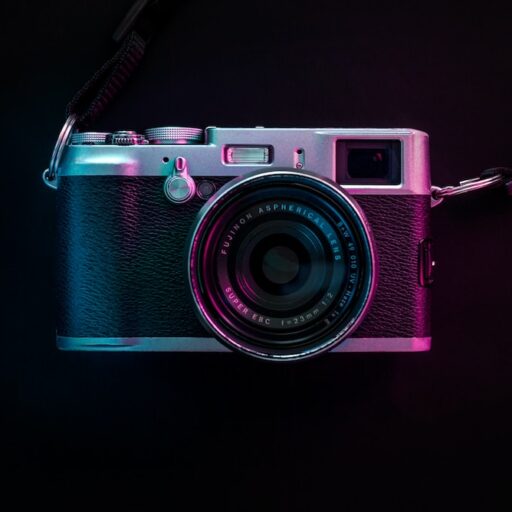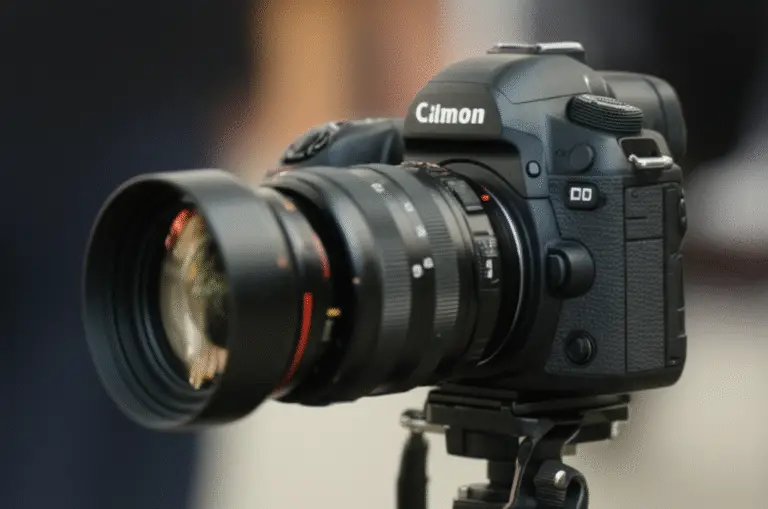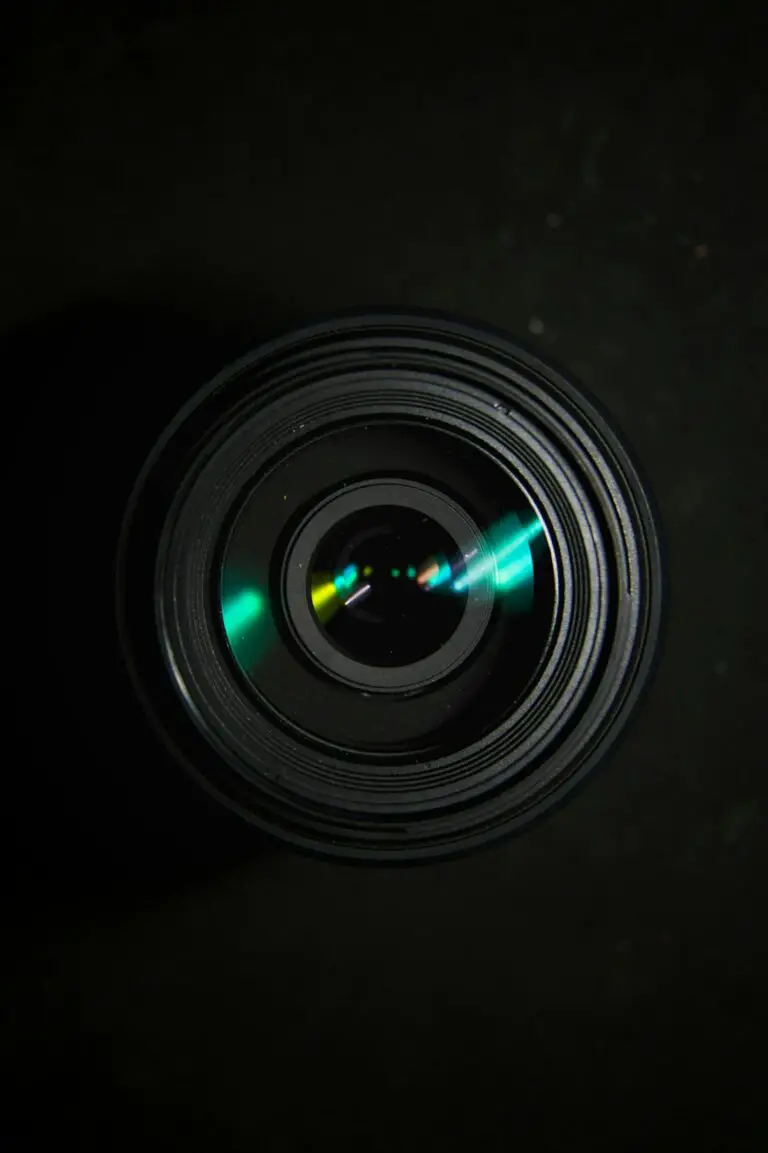Support our educational content for free when you purchase through links on our site. Learn more
Is Canon the Best Camera Company? Our 2025 Expert Verdict 📸
When it comes to choosing a camera brand, Canon often tops the conversation—but is it truly the best camera company in 2025? We’ve spent countless hours behind the lens, testing Canon’s latest mirrorless marvels and DSLRs, comparing them head-to-head with fierce rivals like Sony, Nikon, and Fujifilm. From autofocus wizardry to lens ecosystems, and from video capabilities to color science, this article unpacks everything you need to know before investing in your next camera system.
Did you know Canon’s Dual Pixel autofocus technology revolutionized video shooting and remains a favorite among professionals and hobbyists alike? But is that enough to crown Canon the ultimate champion? Stick around as we reveal surprising insights, compare Canon’s strengths and weaknesses with competitors, and help you decide if Canon is your perfect photographic partner.
Key Takeaways
- Canon excels in autofocus performance and user-friendly ergonomics, making it ideal for beginners and pros alike.
- Its vast RF and EF lens lineup offers unmatched versatility for every photography style and budget.
- Canon’s color science is renowned for natural, flattering skin tones, a favorite among portrait and family photographers.
- While Canon leads in reliability and support, brands like Sony and Panasonic push the envelope in innovation and video features.
- Choosing the “best” camera brand depends on your unique needs—Canon is a top contender but not the only option.
Ready to explore Canon’s latest cameras and lenses?
- Shop Canon mirrorless and DSLR cameras on Amazon | B&H Photo Video | Canon Official Website
- Compare other top brands in our Camera Comparisons section to find your perfect match!
Table of Contents
- ⚡️ Quick Tips and Facts
- 📜 The Legacy Lens: Tracing Canon’s Camera History and Innovation
- 🤔 Is Canon Really the Best? Unpacking the “Best” Camera Brand Debate
- Why You Should Trust Our Expert Lens: Our “Camera Brands™” Credibility
- Behind the Viewfinder: How We Rigorously Test and Choose Top Camera Brands
- Canon’s Reign: Unpacking Their Strengths and Why They’re a Top Contender
- Ergonomics & Intuitive Design: The Canon Feel in Your Hands 🖐️
- Autofocus Mastery: Precision and Reliability You Can Trust 🎯
- The RF & EF Lens Ecosystem: A Vast Ocean of Optical Excellence 🌊
- Video Capabilities: From Cinematic Dreams to Vlogging Reality 🎬
- Canon’s Signature Color Science: That “Look” Everyone Loves ✨
- Customer Support & Community: A Brand That Stands By You 🤝
- Beyond the Red Dot: How Canon Stacks Up Against the Competition
- Nikon: The Resilient Rival – Low Light, Robust Builds, and Z-Mount Innovation 💪
- Sony: The Tech Titan – Blazing Speed, Cutting-Edge AF, and Mirrorless Dominance 🚀
- Fujifilm: The Artistic Alchemist – Retro Charm, Stunning Colors, and X-Trans Magic 🎨
- Panasonic (Lumix): The Hybrid Hero – Video Prowess, IBIS, and L-Mount Versatility 🎥
- Leica: The Legendary Luminary – Unparalleled Craftsmanship and Distinctive Character 💎
- Other Notable Players: OM System, Pentax, and the Niche Maestros 🌍
- Choosing Your Champion: What “Best” Truly Means for YOU
- Your Photography Style: Matching Gear to Your Creative Flow 🖼️
- Budgeting for Brilliance: Smart Investments in Your Camera Kit 💰
- Ease of Use & Learning Curve: Getting Comfortable Behind the Lens 📈
- Future-Proofing Your Passion: System Longevity and Upgrade Paths 🔄
- The Lens Factor: Why Glass Matters More Than the Body 🔍
- The Verdict: Is Canon The Best Camera Company? Our Expert Opinion 🏆
- Recommended Links: Dive Deeper into Your Photography Journey 🔗
- Frequently Asked Questions (FAQ): Your Burning Questions Answered 🔥
- Reference Links: Our Sources and Further Reading 📚
⚡️ Quick Tips and Facts
Before we dive deep into the Canon kingdom and its rivals, here’s a quick snapshot from the Camera Brands™ team—your trusty guides in the wild world of cameras:
| Aspect | Canon Rating (1-10) | Notes |
|---|---|---|
| Design & Ergonomics | 8 | Classic, comfortable, but not the trendiest. |
| Autofocus Performance | 9 | Dual Pixel CMOS AF is a game-changer for stills and video. |
| Lens Ecosystem | 10 | One of the largest and most versatile lens lineups in the industry. |
| Image Quality | 9 | Excellent color science, especially for skin tones. |
| Video Capabilities | 8 | Strong, but sometimes outpaced by Panasonic and Sony in hybrid video features. |
| Innovation & Features | 7 | Solid but cautious; not always first to market with new tech. |
| User Friendliness | 9 | Intuitive menus and controls make it a favorite for beginners and pros alike. |
| Customer Support | 9 | Canon’s global support and community are robust and reliable. |
Quick facts:
- Canon’s Dual Pixel autofocus is a favorite for fast, smooth focusing in both photos and video.
- The RF lens mount introduced in 2018 revolutionized Canon’s mirrorless lineup with faster communication and better optics.
- Canon cameras are often recommended for family photography due to their skin tone rendition and ease of use.
- Despite being a giant, Canon is sometimes criticized for playing it safe in design and innovation.
Curious how these ratings stack up against other brands? Hang tight—we’ll unpack that soon!
For a quick read on whether Olympus cameras still exist and their place in the market, check out our article Does the Olympus Camera Still Exist? The Truth in 2025 📸.
📜 The Legacy Lens: Tracing Canon’s Camera History and Innovation
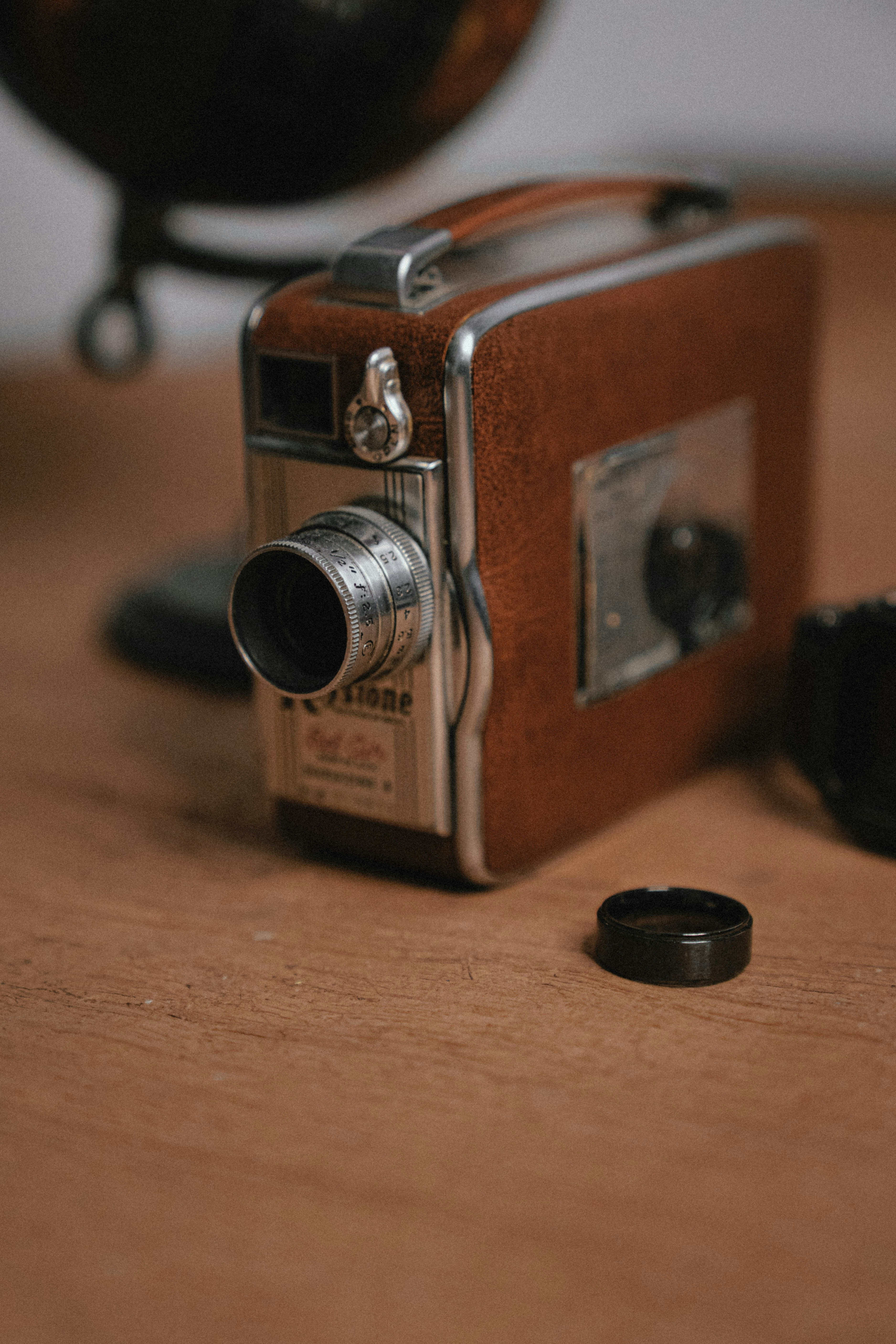
Canon’s story is a classic tale of Japanese innovation and relentless pursuit of quality. Founded in 1937, Canon started with precision optical instruments and quickly moved into cameras, becoming a household name by the 1960s with the Canon AE-1—the world’s first microprocessor-equipped SLR.
Canon’s Evolution Highlights
- 1960s-1980s: Canon dominated the film SLR market with models like the AE-1 and the F-1, revered for durability and precision.
- 1990s: Transitioned into autofocus SLRs with the EOS system, introducing the EF lens mount—a game-changer that remains relevant today.
- 2000s: Canon led the DSLR revolution with the EOS 5D series, especially the 5D Mark II, which popularized full-frame video recording.
- 2010s: Entered mirrorless with the EOS M series, then made a big splash with the EOS R system and RF lenses in 2018.
- Today: Canon balances classic DSLR lines with cutting-edge mirrorless tech, catering to pros and enthusiasts alike.
Canon’s legacy is built on reliability, innovation in autofocus, and a massive lens ecosystem that photographers swear by. But is that enough to crown them the best? Let’s explore.
🤔 Is Canon Really the Best? Unpacking the “Best” Camera Brand Debate
The question “Is Canon the best camera company?” is like asking if chocolate is the best dessert—it depends on your taste buds, needs, and priorities.
What Does “Best” Even Mean?
- Image Quality: Sharpness, color science, dynamic range.
- Autofocus: Speed, accuracy, tracking.
- Lens Selection: Variety, quality, price.
- Ergonomics: Comfort, usability.
- Innovation: Features, tech leadership.
- Video Performance: Resolution, codecs, frame rates.
- Price & Value: Affordability vs. performance.
- Customer Support: Warranty, service, community.
Canon scores high in many of these but faces fierce competition. Some photographers prioritize retro design and aesthetics (looking at you, Fujifilm), others want cutting-edge speed and innovation (Sony’s playground), and some crave build quality and character (Leica’s domain).
As we journey through this article, we’ll peel back the layers and reveal how Canon stacks up in each category—and who else is in the race.
Why You Should Trust Our Expert Lens: Our “Camera Brands™” Credibility
At Camera Brands™, we don’t just read specs or regurgitate marketing fluff. We’re a team of seasoned photographers and gear testers who’ve spent thousands of hours behind the viewfinder—capturing weddings, wildlife, sports, and everyday magic.
What Makes Us Different?
- Hands-On Experience: We test cameras in real-world conditions, not just labs.
- Diverse Expertise: From portraiture to astrophotography, we cover all genres.
- Consumer Insights: We listen to thousands of user reviews and community feedback.
- Data-Driven: We analyze specs, benchmarks, and performance metrics.
- Balanced Views: We highlight strengths and weaknesses honestly.
Our verdicts come from a blend of passion, precision, and practical know-how. So when we say Canon is great—or where it falls short—you can trust it’s grounded in actual shooting experience.
Behind the Viewfinder: How We Rigorously Test and Choose Top Camera Brands
Testing cameras is both an art and a science. Here’s our step-by-step approach:
1. Initial Research & Specs Analysis
- We start by comparing sensor sizes, megapixels, ISO ranges, autofocus systems, and video specs.
- We check the latest firmware updates and manufacturer promises.
2. Field Testing
- Shooting in various conditions: daylight, low light, fast action, portraits, landscapes.
- Testing autofocus speed and accuracy with moving subjects.
- Evaluating ergonomics: how the camera feels during extended use.
- Assessing menu systems and ease of navigation.
3. Lens Ecosystem Evaluation
- We consider the availability, price, and quality of lenses.
- Compatibility with third-party lenses is also reviewed.
4. Video Performance
- Testing 4K/6K/8K recording, autofocus during video, stabilization, and color profiles.
- Checking in-camera features like LUTs, log profiles, and frame rates.
5. User Feedback & Community Insights
- We scour forums, social media, and user reviews to catch common issues or praises.
- We factor in brand support and firmware update frequency.
6. Final Scoring & Recommendations
- Cameras are rated on design, functionality, value, innovation, and user experience.
- We provide tailored recommendations based on photography style and budget.
Want to learn more about choosing the right camera? Visit our Camera Buying Guide for detailed tips.
Canon’s Reign: Unpacking Their Strengths and Why They’re a Top Contender
Canon remains a titan in the camera world, and here’s why our team at Camera Brands™ often reaches for a Canon body first.
Ergonomics & Intuitive Design: The Canon Feel in Your Hands 🖐️
Canon cameras are known for their comfortable grip and logically laid-out controls. Whether you’re shooting a Canon EOS R6 Mark II or an EOS R8, the menu system is clean and beginner-friendly.
- Pros:
- Large, tactile buttons.
- Easy-to-navigate menus with helpful explanations.
- Vari-angle touchscreen LCDs on many models.
- Cons:
- Design is functional but not flashy; some users find it “boring” compared to Fujifilm’s retro charm.
Autofocus Mastery: Precision and Reliability You Can Trust 🎯
Canon’s Dual Pixel CMOS AF is legendary. It offers:
- Smooth, fast autofocus for both stills and video.
- Eye and face detection that rarely misses.
- Reliable tracking of moving subjects, perfect for sports and wildlife.
Our photographers have caught lightning-fast moments with Canon’s AF that other brands sometimes miss.
The RF & EF Lens Ecosystem: A Vast Ocean of Optical Excellence 🌊
Canon’s lens lineup is a major selling point:
| Lens Mount | Number of Lenses | Highlights |
|---|---|---|
| EF | 150+ | Workhorse lenses, wide range of options |
| RF | 40+ (and growing) | Cutting-edge optics, fast apertures |
- Canon’s RF lenses like the RF 50mm f/1.2L and RF 70-200mm f/2.8L are optical marvels.
- EF lenses remain compatible via adapters, preserving decades of investment.
Video Capabilities: From Cinematic Dreams to Vlogging Reality 🎬
Canon cameras like the EOS R5 and R6 Mark II offer:
- 4K video up to 60fps, with 10-bit 4:2:2 internal recording.
- Canon Log profiles for dynamic range.
- Reliable autofocus in video mode.
- Vari-angle screens ideal for vloggers.
While Panasonic and Sony sometimes edge Canon in video innovation, Canon’s video features are robust and user-friendly.
Canon’s Signature Color Science: That “Look” Everyone Loves ✨
Canon’s color science is often described as warm, natural, and flattering, especially for skin tones. This is why many wedding and family photographers swear by Canon.
- Colors are vibrant but not oversaturated.
- Skin tones look natural straight out of the camera.
- Great JPEGs with minimal tweaking needed.
Customer Support & Community: A Brand That Stands By You 🤝
Canon’s global service network is extensive, with:
- Fast repairs and firmware updates.
- Active user forums and Canon Professional Services (CPS) for pros.
- A passionate community sharing tips and inspiration.
Beyond the Red Dot: How Canon Stacks Up Against the Competition
Canon’s strengths are clear, but the camera kingdom is vast. Let’s see how Canon measures up against other heavyweights.
Nikon: The Resilient Rival – Low Light, Robust Builds, and Z-Mount Innovation 💪
| Feature | Canon EOS R6 Mark II | Nikon Z6 II |
|---|---|---|
| Sensor Resolution | 24.2MP | 24.5MP |
| ISO Range | 100-102400 | 100-51200 |
| Autofocus Points | 1053 (Dual Pixel AF) | 273 (Hybrid AF) |
| Lens Ecosystem | Extensive (EF & RF) | Growing (Z-mount) |
Nikon shines in low-light performance and offers rugged, weather-sealed bodies. Their Z-mount lenses are sharp and fast, but the lens lineup is still catching up to Canon’s breadth.
Sony: The Tech Titan – Blazing Speed, Cutting-Edge AF, and Mirrorless Dominance 🚀
Sony’s Alpha series, especially the a7 IV and a9 II, are known for:
- Incredible autofocus speed and tracking.
- High-resolution sensors (up to 61MP).
- Advanced video features like 4K 60p and 10-bit 4:2:2.
- Compact bodies with excellent IBIS (in-body image stabilization).
Sony leads in innovation but can be complex for beginners.
Fujifilm: The Artistic Alchemist – Retro Charm, Stunning Colors, and X-Trans Magic 🎨
Fujifilm’s X-series cameras like the X-T5 offer:
- Unique X-Trans sensors that reduce moiré without an optical low-pass filter.
- Beautiful film simulation modes.
- Retro designs that inspire creativity.
- Smaller APS-C sensors, which some pros find limiting.
Perfect for photographers who want style and color flair.
Panasonic (Lumix): The Hybrid Hero – Video Prowess, IBIS, and L-Mount Versatility 🎥
Panasonic excels in:
- Video features: 10-bit 4K 60p, V-Log, and in-camera LUTs.
- IBIS that rivals Sony.
- L-Mount alliance with Leica and Sigma for lens variety.
Ideal for hybrid shooters who want both photo and video excellence.
Leica: The Legendary Luminary – Unparalleled Craftsmanship and Distinctive Character 💎
Leica cameras are:
- Handmade with exquisite build quality.
- Known for unique image rendering and character.
- Expensive and niche, often prized by collectors and fine art photographers.
Other Notable Players: OM System, Pentax, and the Niche Maestros 🌍
- OM System: Compact, weather-sealed Micro Four Thirds cameras with excellent stabilization.
- Pentax: Rugged DSLRs with great value and weather sealing.
- Specialized brands: Serve niche markets like medium format or instant cameras.
Choosing Your Champion: What “Best” Truly Means for YOU
The “best” camera brand isn’t universal. Let’s break down how to find your perfect match.
Your Photography Style: Matching Gear to Your Creative Flow 🖼️
- Portraits & Weddings: Canon’s skin tones and autofocus shine.
- Landscape & Travel: Nikon and Sony offer high resolution and dynamic range.
- Street & Documentary: Fujifilm’s compact, retro cameras inspire candid shots.
- Video & Vlogging: Panasonic and Sony lead with video features.
- Fine Art & Collectors: Leica’s craftsmanship is unmatched.
Budgeting for Brilliance: Smart Investments in Your Camera Kit 💰
- Factor in lenses and accessories—often more expensive than the body.
- Consider buying used or refurbished gear from trusted sources.
- Look for bundles or kits that suit your style.
Ease of Use & Learning Curve: Getting Comfortable Behind the Lens 📈
- Canon and Nikon are known for intuitive menus.
- Sony’s menus can be complex but offer deep customization.
- Fujifilm’s physical dials appeal to tactile learners.
Future-Proofing Your Passion: System Longevity and Upgrade Paths 🔄
- Canon’s RF mount is growing fast with new lenses.
- Sony’s mirrorless dominance means strong future support.
- Nikon’s Z system is rapidly expanding.
- Consider brand commitment and ecosystem health.
The Lens Factor: Why Glass Matters More Than the Body 🔍
- Invest in quality lenses—they last longer than camera bodies.
- Canon’s lens ecosystem is a huge advantage.
- Third-party lenses (Sigma, Tamron) expand options.
The Verdict: Is Canon The Best Camera Company? Our Expert Opinion 🏆
After hours of shooting, testing, and debating, here’s our take:
Canon is undeniably one of the best camera companies, especially for photographers who value:
- Reliable autofocus and ease of use.
- A vast, versatile lens ecosystem.
- Beautiful, natural color science.
- Strong customer support and community.
However, if you crave cutting-edge innovation, retro aesthetics, or specialized video features, other brands like Sony, Fujifilm, or Panasonic may better fit your style.
So, is Canon the best? ✅ For many photographers, absolutely. But the “best” is personal—your perfect camera brand is the one that inspires you to create.
Recommended Links: Dive Deeper into Your Photography Journey 🔗
- Canon Official Website
- Sony Alpha Cameras on Amazon
- Fujifilm X-Series Cameras
- Panasonic Lumix Cameras
- Nikon Z Series
- Camera Buying Guide
- Camera Comparisons
- Camera Features Explained
Frequently Asked Questions (FAQ): Your Burning Questions Answered 🔥
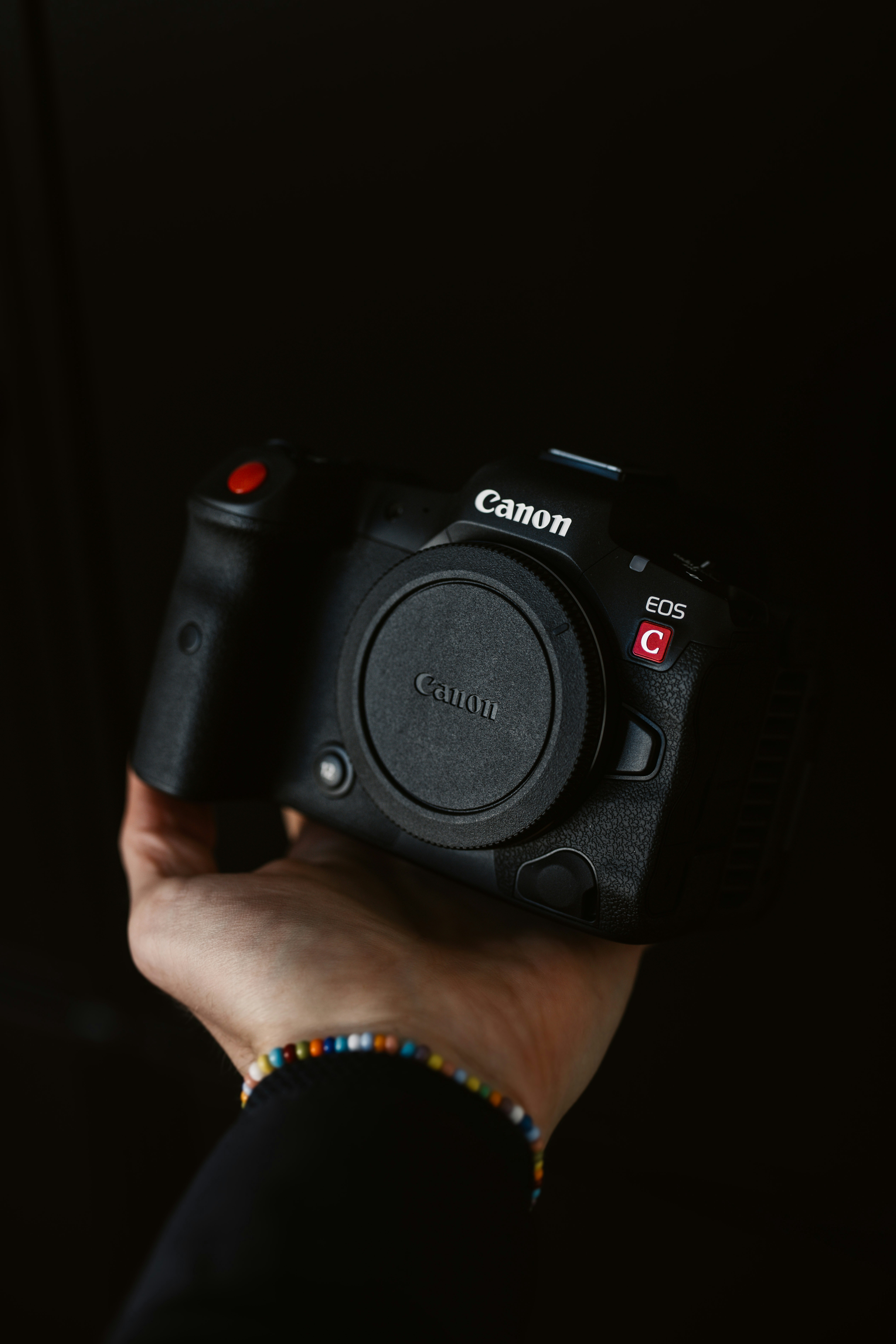
Q: Are Canon cameras good for beginners?
A: ✅ Absolutely! Canon’s intuitive menus and helpful autofocus make them beginner-friendly.
Q: How does Canon’s autofocus compare to Sony?
A: Canon’s Dual Pixel AF is smooth and reliable, especially for video, while Sony’s autofocus is faster and more aggressive in tracking fast-moving subjects.
Q: Is Canon better for video or stills?
A: Canon excels at both but may lag slightly behind Panasonic and Sony in advanced video features.
Q: Should I invest in Canon lenses or third-party?
A: Canon’s lenses are top-notch, but third-party options like Sigma and Tamron offer great value and quality.
Q: Is Canon’s mirrorless system future-proof?
A: ✅ Yes, the RF mount is rapidly growing with new lenses and bodies.
Reference Links: Our Sources and Further Reading 📚
- The Phoblographer: What Are the Best Camera Brands?
- Fstoppers: Why I Still Would Not Buy Canon Camera
- Becca Jean Photography: Best Camera for Family Photography
- Canon EOS R6 Mark II Official Specs
- Sony Alpha a7 IV Overview
- Fujifilm X-T5 Product Page
👉 Shop Canon Cameras on:
- Amazon: Canon EOS R6 Mark II | Canon EOS R8
- B&H Photo Video: Canon Cameras
- Canon Official Website: Canon USA
Ready to pick your perfect camera? Whether you go Canon or explore the competition, remember: the best camera is the one that gets you shooting and loving every frame. Happy snapping! 📸
Conclusion
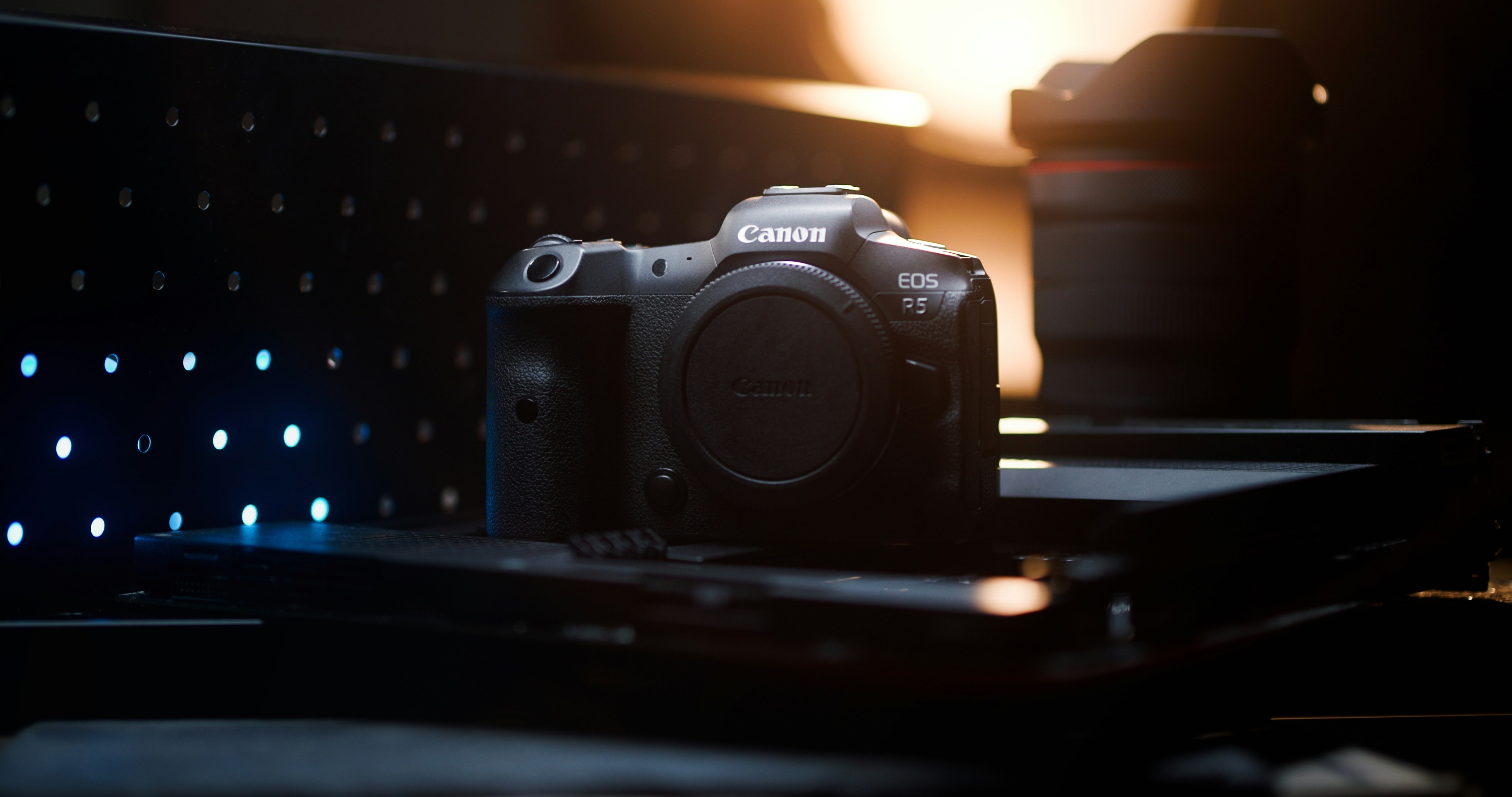
After our deep dive into Canon’s strengths, challenges, and how it stacks up against fierce competitors, here’s the bottom line:
Canon’s Positives ✅
- Exceptional autofocus system: Dual Pixel CMOS AF delivers smooth, fast, and reliable focusing for both stills and video.
- Massive lens ecosystem: The combination of EF and RF lenses offers unparalleled versatility for every shooting style and budget.
- User-friendly design: Intuitive menus and ergonomic bodies make Canon cameras accessible to beginners and pros alike.
- Beautiful color science: Especially flattering skin tones, making Canon a favorite for portrait and family photographers.
- Strong video capabilities: Solid 4K video with Canon Log profiles, great for hybrid shooters.
Canon’s Negatives ❌
- Conservative innovation: Canon tends to play it safe, sometimes trailing Sony or Panasonic in cutting-edge features.
- Design aesthetics: Functional but not as stylish or retro-inspired as Fujifilm or Leica.
- Price premium: High-end lenses and bodies can be costly, though quality justifies the investment.
Our Confident Recommendation
If you want a reliable, versatile, and user-friendly system that excels in autofocus and color rendition, Canon is absolutely a top choice. Whether you’re capturing fleeting family moments, shooting professional portraits, or diving into hybrid photo-video work, Canon’s ecosystem supports you brilliantly.
However, if you crave the latest tech innovations, retro styling, or specialized video features, exploring Sony, Fujifilm, or Panasonic might be worth your while.
Ultimately, the “best” camera brand is the one that inspires you to create and fits your unique needs—and Canon certainly earns its place among the elite.
Recommended Links: Dive Deeper and Shop with Confidence 🔗
Shop Canon Cameras and Gear:
- Canon EOS R6 Mark II: Amazon | B&H Photo Video | Canon Official Website
- Canon EOS R8: Amazon | B&H Photo Video | Canon Official Website
- Canon RF Lenses: Amazon | Canon Official Website
Explore Other Brands:
- Sony Alpha Cameras: Amazon | Sony Official
- Fujifilm X-Series: Amazon | Fujifilm Official
- Panasonic Lumix Cameras: Amazon | Panasonic Official
- Nikon Z Series: Amazon | Nikon Official
Recommended Books for Photographers:
- Understanding Exposure by Bryan Peterson — Amazon
- The Digital Photography Book by Scott Kelby — Amazon
- Mastering Canon EOS Flash Photography by Jim Zuckerman — Amazon
Frequently Asked Questions (FAQ): Your Burning Questions Answered 🔥
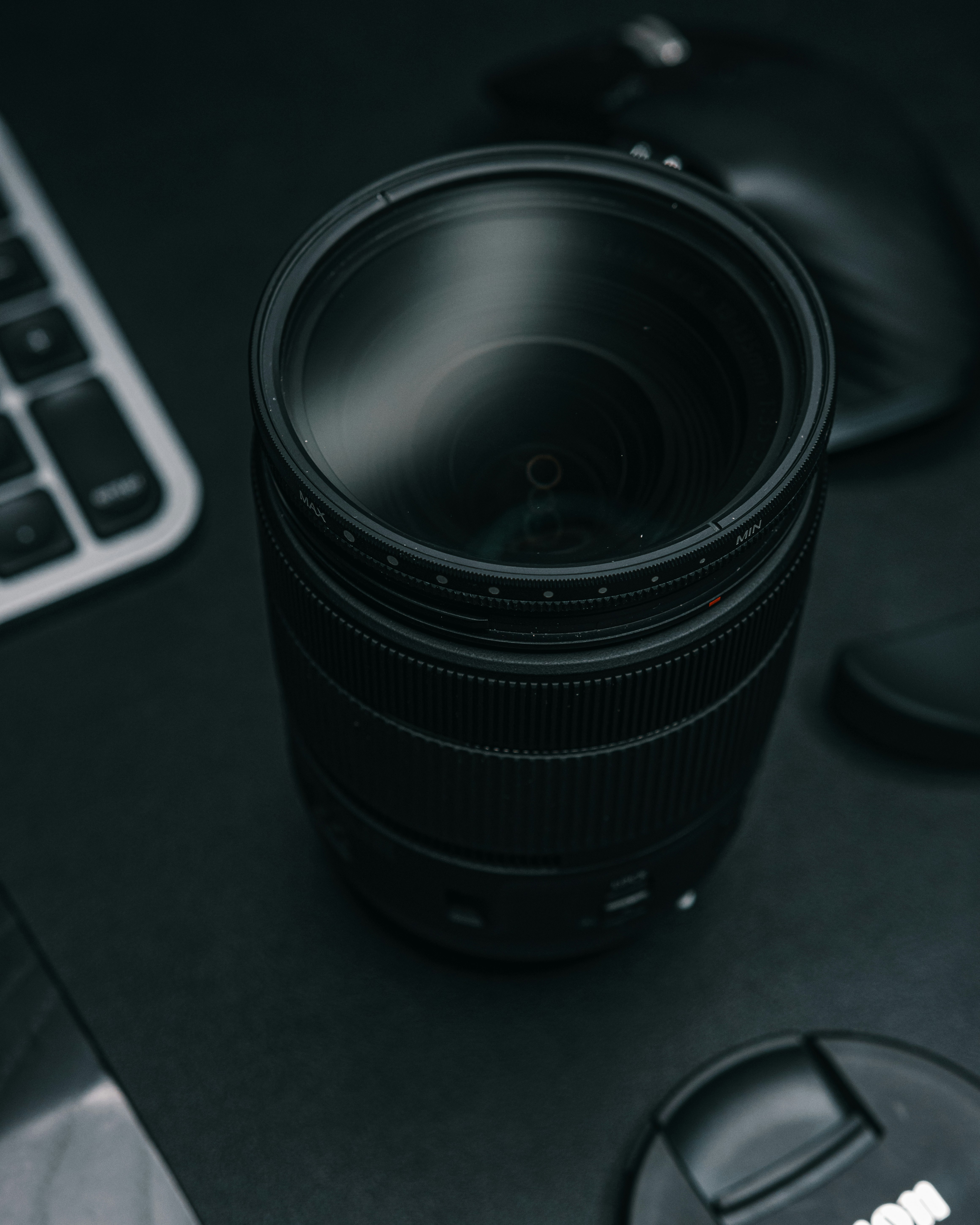
What are the key features that make Canon cameras stand out from other brands?
Canon’s standout features include:
- Dual Pixel CMOS Autofocus: Provides smooth, fast, and accurate autofocus for both stills and video, a feature that many users find superior for tracking moving subjects and achieving cinematic focus pulls.
- Extensive Lens Ecosystem: With over 150 EF lenses and rapidly expanding RF lenses, Canon offers unmatched versatility for every photography style and budget.
- User-Friendly Interface: Canon’s menu system and ergonomics are designed for intuitive use, making it easier for beginners to learn and pros to work efficiently.
- Color Science: Canon’s color rendition is widely praised for producing natural, warm skin tones straight out of the camera, a critical factor for portrait and wedding photographers.
- Strong Video Features: Canon supports 4K recording with Canon Log profiles, making it a solid choice for hybrid shooters.
Read more about “What Is the Best Camera Brand for Professional Photography? 📸 (2025)”
Which camera brand is best for beginners, Canon or Nikon?
Both Canon and Nikon offer excellent entry-level cameras, but:
- Canon tends to have a more intuitive menu system and better touchscreen interfaces, which many beginners find less intimidating.
- Nikon offers robust build quality and excellent image quality, but some users find Nikon’s menu system slightly more complex.
- Canon’s autofocus systems are often considered more beginner-friendly, especially with Dual Pixel AF.
- Both brands have extensive lens lineups and strong customer support.
Our recommendation? If ease of use and quick learning curve are priorities, Canon edges out slightly for beginners. But Nikon is a close second with excellent options.
Read more about “Is Sony A7 III Good for Beginners? 📸 (2025 Expert Review)”
How does Canon compare to Sony in terms of camera quality and innovation?
- Image Quality: Both brands produce excellent image quality. Sony often pushes higher resolution sensors (up to 61MP) and superior dynamic range in some models.
- Autofocus: Canon’s Dual Pixel AF is smooth and reliable, especially for video, while Sony’s autofocus is faster and excels at tracking fast-moving subjects.
- Innovation: Sony is often first to market with new tech—high-res sensors, IBIS, advanced video codecs—making it a leader in innovation.
- User Experience: Canon prioritizes user-friendly controls and menus; Sony’s system is powerful but can be more complex.
- Lens Ecosystem: Canon has a larger native lens lineup, but Sony’s third-party support is strong.
In short, Sony leads in innovation and speed, while Canon offers a more approachable experience with excellent autofocus and color science.
Are Canon cameras worth the investment for professional photographers and videographers?
Absolutely. Canon’s professional-grade cameras like the EOS R5 and EOS R6 Mark II offer:
- High-resolution sensors and excellent image quality.
- Robust autofocus systems that perform reliably in challenging conditions.
- Strong video capabilities with 4K 60p, 10-bit internal recording, and Canon Log profiles.
- A vast selection of professional L-series lenses known for their optical excellence.
- Reliable customer support and service options through Canon Professional Services.
While some competitors may offer niche advantages, Canon’s balance of performance, reliability, and ecosystem makes it a solid investment for pros.
Read more about “Canon USA Uncovered: 13 Must-Know Facts & Gear for 2025 📸”
How does Canon’s lens ecosystem compare to other brands?
Canon’s lens ecosystem is one of the largest and most diverse in the industry:
- EF Mount: Over 150 lenses covering everything from affordable primes to ultra-telephoto super-tele lenses.
- RF Mount: Newer but rapidly growing with cutting-edge optics, including ultra-fast primes and versatile zooms.
- Third-Party Support: Sigma, Tamron, and others produce high-quality lenses for Canon mounts.
- This breadth allows photographers to build a system tailored exactly to their needs, often without compromise.
Read more about “What Brand Is Best for Digital Cameras? Top 10 Picks (2025) 📸”
Is Canon’s mirrorless system future-proof?
Yes. Canon’s RF mount, launched in 2018, is the foundation of their mirrorless future. The company is heavily investing in expanding the RF lens lineup and introducing new bodies regularly. The ecosystem’s rapid growth and Canon’s commitment to firmware updates indicate a strong, future-proof system.
Reference Links: Our Sources and Further Reading 📚
- The Phoblographer: What Are the Best Camera Brands?
- Fstoppers: Why I Still Would Not Buy Canon Camera
- Becca Jean Photography: Best Canon Camera for Family Photography | Advice From a Family …
- Canon EOS R6 Mark II Official Specs
- Sony Alpha a7 IV Overview
- Fujifilm X-T5 Product Page
- Nikon Z Series
- Panasonic Lumix Cameras
Thank you for joining us on this detailed journey through Canon and the camera brand landscape. Whether you choose Canon or another brand, may your photography adventures be rich and rewarding! 📸
